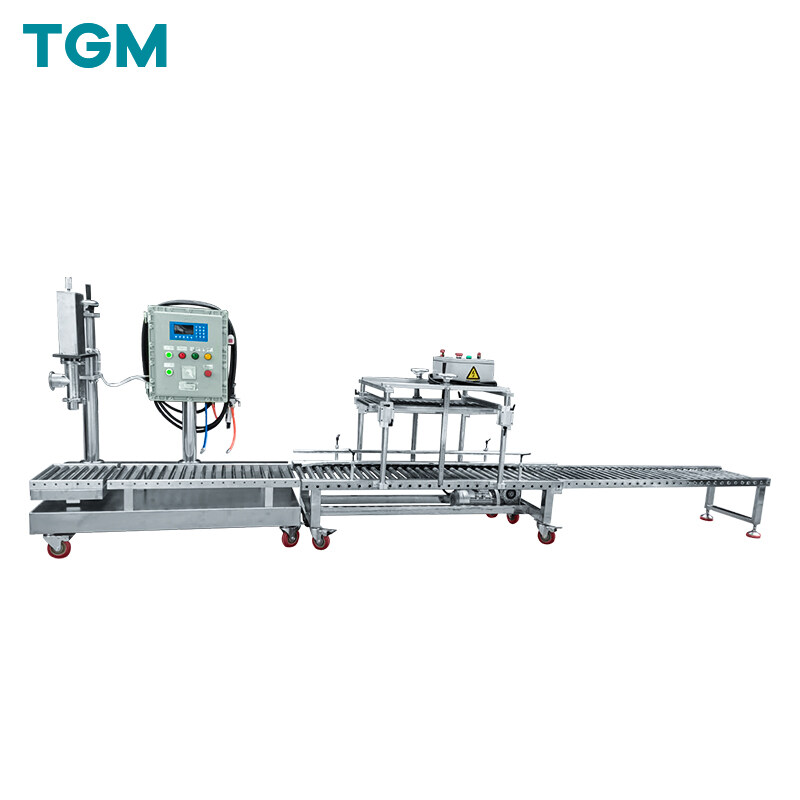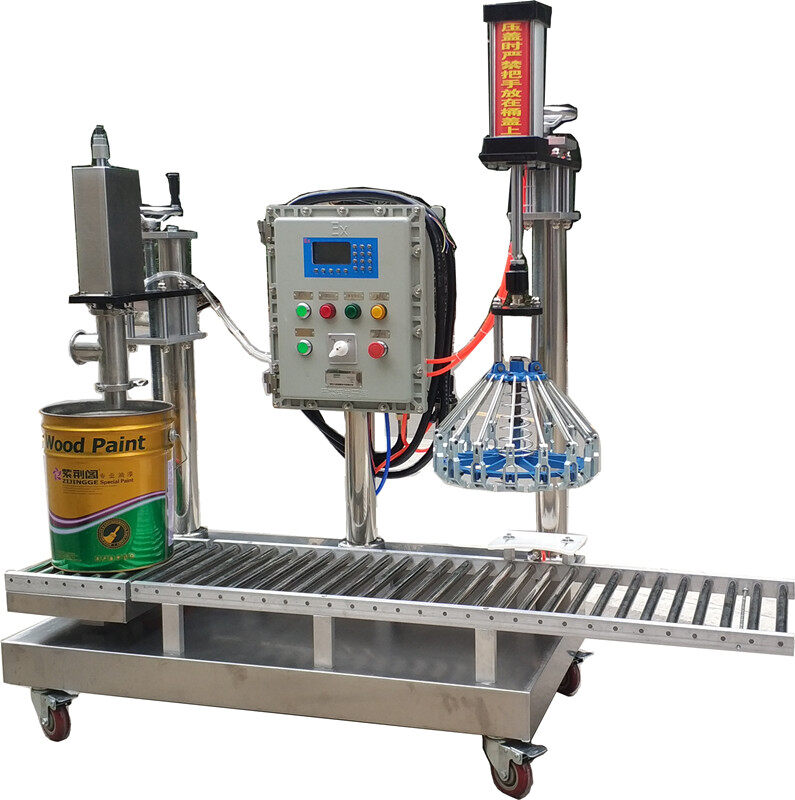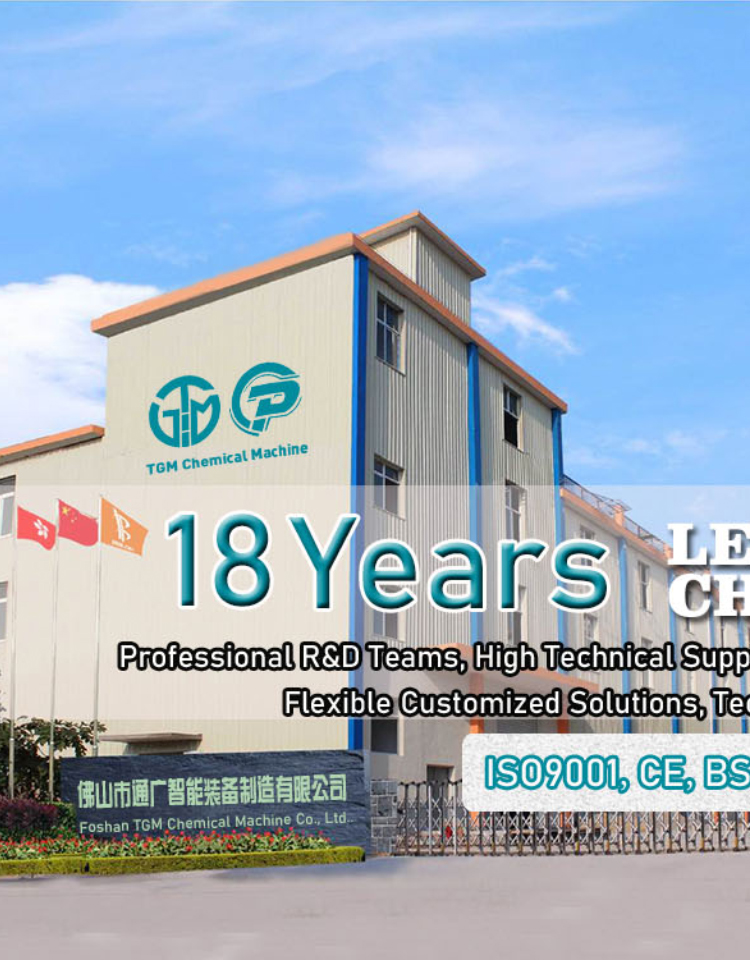Email cannot be empty
Password cannot be empty
Email format error
Email cannot be empty
Email already exists
6-20 characters(letters plus numbers only)
The password is inconsistent
Email format error
Email cannot be empty
Email does not exist
6-20 characters(letters plus numbers only)
The password is inconsistent


How Does the Filling Machine Work
Filling machines belong to the category of packaging machinery. From the perspective of material packaging, it can be divided into liquid filling machines, paste filling machines, powder filling machines, and granular filling machines. The degree of automation can be divided into semi-automatic filling machines and fully automatic filling machines. Wondering how to choose a liquid filling machine? First, let's understand how a liquid filling machine works.

How does the filling machine work?
The filling machine is mainly divided into three parts: storage tank, filling host and frequency conversion speed regulation transmission module. The liquid filling box of the liquid filling machine is located on the top of the device. It is a constant pressure with a level sensor and a feed solenoid valve. The liquid material conveyed in the previous process enters the storage tank through the solenoid valve. When the appropriate liquid level is reached, the liquid level sensor will send a signal to close and stop feeding; when the material surface drops to the position, it will automatically open. Enter the solenoid valve. In the lower part of the tank, the discharge port is connected by a pipe to the suction pipe of the liquid-filled main engine. When the main engine is working, the liquid in the liquid storage tank is sucked into the piston cylinder and injected into the bottle through the nozzle.
There are multiple filling heads at the front of the main machine, and liquid collecting cylinders on both sides, each cylinder corresponds to a filling head. The liquid in the storage tank is sucked into the cylinder, then squeezed, and poured into the corresponding bottle through the filling head. The micro cylinder on the filling head drives a small piston to open and close the nozzle of the filling head, acting as a valve. At the beginning of filling, insert the nozzle into the bottle, open the small piston at a certain distance from the bottom of the bottle, and start filling. Fill the head and rim until the filling is complete, then close the spout and lift it into place for the bottle. On one side of the filling station, there are two cylinder-driven stoppers (one at the bottle mouth and one at the bottle mouth), which cooperate with the bottle opener on the filling station for filling.
The liquid filling machine conveys the module bottle into the bottle from the conveyor belt, starts the bottle, the bottle-out cylinder extends, and the bottle-out stopper intercepts the empty bottle. A photoelectric switch is set at the entrance to detect the number of bottles. When the number of filling heads is the same as the number of filling heads, the feeding cylinder will be lengthened, the feeding port will be blocked, and the conveyor motor will stop running. After the filling is completed, the filling head rises, the discharge cylinder retracts, the conveying motor rotates again, and the filling bottle is sent out.
How to choose the right filling machine?
Reasonable selection of filling machines is an important way to ensure product quality and improve economic benefits
Generally speaking, the production practice should be closely related, and the filling machine with good quality, high efficiency, simple structure, convenient use and maintenance, small size and light weight should be selected as far as possible. Filling machine knowledge When choosing a filling machine, the following principles should be followed.
The principle of serving the production process. First of all, an appropriate filling machine should be selected according to the properties of the filling material (viscosity, foaming, volatility, gas content, etc.) to meet the production process requirements. For example, for wine with a strong aroma, in order to avoid the loss of volatile aromatic substances, a container type or atmospheric filling machine should generally be used; for juice liquids, in order to reduce contact with air and ensure product quality, generally should be used. Vacuum juice filling machine. Secondly, the production capacity of the filling machine should be matched with the production capacity of the processing and packaging machinery before and after the process.
The principle of high productivity and good product quality
The level of productivity directly reflects the production capacity of the production line. Therefore, the higher the productivity, the better the economic benefits. In order to improve product quality, a filling machine with high equipment precision and high degree of automation should be selected. However, the price of the equipment has also increased accordingly, increasing the unit cost of the product. Therefore, when selecting a filling machine, the relevant factors should be comprehensively considered in combination with the production process requirements.
The principle of wide process range
The process range of a filling machine refers to its ability to adapt to different production requirements. The wider the process range, the more the utilization rate of the equipment can be improved, and one machine can be used for multiple purposes, that is, the same equipment can be used to fill a variety of materials and specifications. Therefore, in order to meet the production requirements of various varieties and specifications in the beverage and beverage industries, a filling machine with as wide a process range as possible should be selected.
Conclusion
For more information about IBC tanks filling machine,cartridge sealant filling machine,cartridge tube filling machine, we are glad to answer for you.

